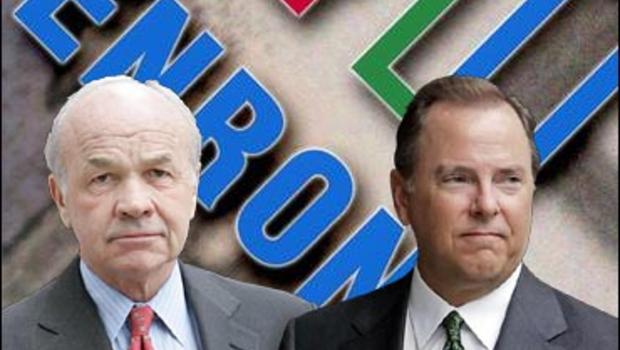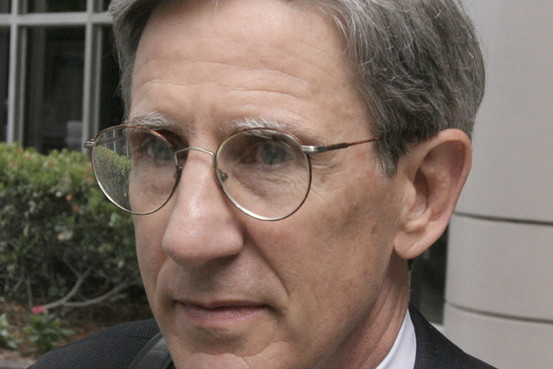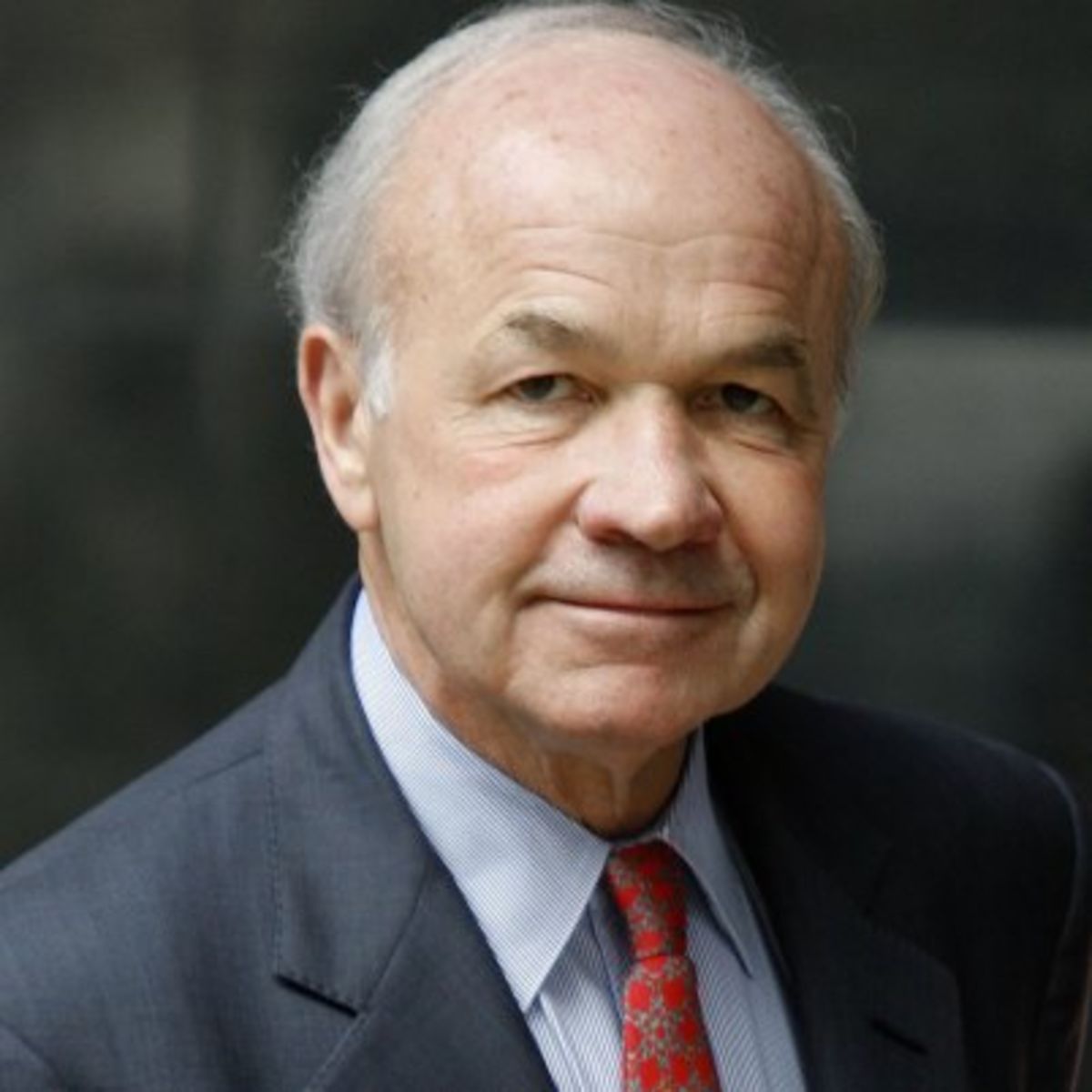 Week Sixteen of the corporate criminal case of the decade was closing argument week, and the lawyers used the full 12 hours over two and a half days that U.S. District Judge Sim Lake allocated for such argument.
Week Sixteen of the corporate criminal case of the decade was closing argument week, and the lawyers used the full 12 hours over two and a half days that U.S. District Judge Sim Lake allocated for such argument.
As with opening arguments, lawyers and the mainstream media tend to overestimate the importance of closing arguments, which really are more about reinforcing the views of jurors — particularly the leaders on the jury — rather than actually changing any juror’s opinion about the case.
Having said that, even though cases are rarely won during closing argument, cases can be more easily lost during closing if an attorney gets careless. I wasn’t able to attend the Lay-Skilling closing arguments because of prior commitments, but my sense from reading the transcript is that none of the lawyers who participated in closing arguments came close to losing the case for their client.
Assistant U.S. Attorney Kathy Ruemmler handled the first part of the Enron Task Forceís closing, and — although competently presented — I found reading her argument to be quite tedious.
Indeed, Ruemmler’s delivery was so slow in the initial hour and a half of the presentation that Judge Lake suggested at the lunch break (outside the presence of the jury, of course) that she might want to pick up the pace a bit.
Rather than focusing in on specific allegedly false statements or specific testimony of witnesses, Ruemmler relied more on generalities and provocative words — Lay and Skilling’s statements were “lies,” they were “arrogant,” their testimony was “ludicrous” or “patently absurd” or “outrageous” while favorable testimony of Task Force witnesses was “compelling.”
Given that virtually every factual issue relating to the Task Force charges was hotly-contested during the trial, my sense in reading the transcript was that such outspoken declarations did not mesh particularly well with Ruemmler’s presentation of evidence relating to those contested issues.
A friend who attended Ruemmer’s closing noted that one spectator dozed off in the middle of her presentation and that several of the jurors appeared to be bored stiff.
Probably sensing the chloroforming effect that she was having, Ruemmler after lunch tried to liven things up a bit by punctuating her remarks with hand claps, although one can only wonder whether that might have seem contrived in comparison to the rather bland presentation.
The Financial Times had the best observation about the performance in commenting that “trial-weary jurors” would likely “enjoy a little variety” when Lay lawyer Mike Ramsey delivered his closing argument, noting that Ramsey “missed most of the trial while recovering from heart surgery. It is hard to say whether the jurors or Ramsey have had the more pleasant experience.”
Upon reflection, there may be a couple of valid reasons for Ruemmler’s curious approach.
First, the Task Force may gauge that it’s far ahead with the jurors in what is a fundamentally weak case and thus, a rather bland closing argument reduces the risk of a mistake that could lose that perceived advantage.
Moreover, Ruemmler was the Task Force prosecutor who gave the over-the-top closing argument in the odious 2004 trial of the Nigerian Barge case (which appears to be currently unraveling on appeal) and compounded that dubious performance by absurdly calling for the immediate imprisonment of Merrill Lynch executive Daniel Bayly during his subsequent sentencing hearing. U.S. District Judge Ewing Werlein ignored the Task Force’s proposed sentence.
Inasmuch as certain inflammatory statements made by Ruemmler during closing argument have been raised by the four Merrill Lynch executives in the appeal of their convictions, Ruemmler may have chosen a more vanilla approach in Lay-Skilling to avoid a similar appellate attack.
Despite the restrained nature of the presentation, Ruemmler still hammered on two central themes that the Task Force has emphasized while presenting its case ó (i) the real presumption in the case (“Enron went broke, Lay and Skilling made a lot of money in leading the company, and thus, they must be guilty of some crime”), and (ii) the testimony of the supposedly numerous number of former Enron executives who testified against Lay and Skilling as cooperating witnesses of the Task Force.
As I’ve noted many times during this trial, that latter theme is particularly disingenuous given the Task Force”s icing of dozens of former Enron executives who would have provided exculpatory testimony for Lay and Skilling, including six such witnesses for whom the Task Force specifically declined the Lay-Skilling team”s request for immunity toward the end of the defense’s case.
Reasonable people can differ over whether criminalizing corporate agency costs is sound public policy, but there is no serious question that the Task Force”s effective preclusion of exculpatory testimony for Lay and Skilling from this trial is a serious affront to the principles of justice and the rule of law upon which our criminal justice system is based.
The Task Force prosecutors’ repeated references during closing on the large number of Enron executives/cooperating Task Force witnesses who testified against Lay and Skilling — intimating “how could all these people be lying?” — only underscores the fact that this jury should not have been prevented from hearing from the many former Enron executives who would have provided exculpatory testimony for Lay and Skilling.
The fact that this key issue in the trial has been largely ignored outside a few other blogs is a startling reflection of the fact that a mainstream media that has already convicted Lay and Skilling in the court of public opinion is not ready to confront the grave implications of such prosecutorial abuse, even when such abuse is now regularly emerging in other cases.
As expected, Daniel Petrocelli”s performance on behalf of Skilling was the most entertaining of the closing arguments. Indeed, Petrocelli performance in this trial — win or lose — has cemented his reputation as one of the best trial lawyers in the U.S., and his closing argument reflected that status.
Juggling passion with keen insight and genuine self-deprecation, Petrocelli skillfully challenged the Task Force’s entire theory of the case while using the specific language from the Task Force’s indictment juxtaposed against specific excerpts of testimony from various Task Force and defense witnesses.
The fact that the Task Force attempted to suppress use of the indictment during the trial seemed to empower Petrocelli.
Particularly effective was Petrocelliís dismemberment of the Task Force’s key conspiracy allegation, which the Task Force barely touched on during the trial:
Let me ask you a question, . . . Do you know when this conspiracy started? . . . You’ve heard the whole Government’s case. They’ve given their closing argument. Do you know when [the conspiracy] started? Do you know what happened? What event started it? Was there a meeting? Was there some kind of conversation? Was — what was there? When did it — when did it happen? Where did it happen? Can you answer these questions?
By the way, if you hesitate — if you hesitated, that’s reasonable doubt. Right there. .
. I can’t answer these questions. I probably know this case better than anybody, I will immodestly say. Yes, some of my client’s traits are rubbing off on me. I don’t know when this conspiracy happened. I don’t know who’s in it. I don’t know where it happened. I don’t know how it happened. I can’t tell you the foggiest thing about it. .
. . How can that be? How can that be? How can we have gotten this far? How can we be closing the case and sending it to you and nobody knows where the conspiracy is?
Yet, that conspiracy allegation is the lynchpin upon which the Task Force used extensive hearsay testimony during the trial and kept out exculpatory testimony for Lay and Skilling. But for the Task Force designating those witnesses with exculpatory testimony as unindicted co-conspirators and prompting them to decline to testify on the basis of their Fifth Amendment privilege against self-incrimination, the testimony in this trial would have been dramatically different.
Petrocelli also hammered away at the presumption underlying the Task Forceís case:
Mistakes are not a crime. [Skilling] made a lot of mistakes. He said, “I should have sold those assets off in the international arena. I didn’t do a good job. I miscalculated on broadband. I was a step behind. I should have better anticipated the collapse of the bandwidth market. I trusted Andy Fastow. If I knew now what I knew then, of course, there wouldn’t be an LJM. I made mistakes.”
Mistakes are not a crime. They may lead to liability in a civil case, which it felt like we’ve been in for three months; and God knows, he’s been sued in 200 cases. If he made mistakes and it violates civil laws, then he’ll have to deal with that; but this is a criminal case. Mistakes are not a crime.
Finally, Petrocelli explained why the credibility of the Task Force’s cooperating witnesses is suspect:
[Task Force prosecutors] talked about lies and choices. That’s the theme of their case: lies and choices. Well, the Government, that applies to them, too. They had choices. . . If they really wanted to get the truth out of this case, they didn’t have to use cooperators. That was their choice. If they wanted to use cooperators, they didn’t have to make these deals with them. That was their choice. If they wanted to use cooperators, they didn’t have to put off their sentencing. Not one of them has been sentenced. [. . .]
So Glisan doesn’t make a deal at that time because he’s not prepared to do everything they want him to do until he ended up in the hole in solitary confinement and then in hard prison with two convicts and a single toilet. And then that changed his mind. Then he got a chance to come out on furloughs, see his family, go to a camp. That’s what happens to people. . . . it could happen to anybody, . . . It robs you of your free will. It’s not right. [The prosecution] can do it. You don’t have to accept it, though. You don’t have to believe those witnesses. You can demand a higher quality of proof.
But as entertaining as Petrocelli’s closing was to read, the most surprising development of the closing arguments was the performance of the Lay defense team, which — along with Lay — has come under some heavy criticism in the media and the blogs during the trial. When I heard that Lay and his team had decided to have all four lawyers on the team do a part of the closing argument, I must admit that I first thought that such an unusual approach was a recipe for disaster.
However, I was wrong. Lay attorney Bruce Collins led off with a superb analysis of the charges against Lay, and again used the specific language in the Task Forceís indictment as a guide for the jury in comparing the actual charges against the testimony and the evidence. Collins is not blessed with Petrocelli’s panache (few are), but his closing was a clinically effective breakdown of the Task Force’s entire case against Lay.
Mac Secrest — who performed admirably when forced at mid-trial to take on the lion share of the Lay defense when Ramsey was disabled by surgery — followed with an astute analysis of the Task Force’s cooperating witnesses, pointing out how their credibility is undermined by the very terms of their plea agreements and the substantial amount of time that the Task Force expended in rehearsing their testimony.
Following Secrest, Chip Lewis gave his short, verbal assault on Task Force prosecutor John Hueston (“Don’t come to Houston, Texas and lie to us”), which seemed a bit over-the-top in reading it, but then the folksy Ramsey followed Lewis with a relatively short (12 minutes) and measured commentary on the nature of reasonable doubt and reminding the jurors that they, not the Task Force, are really who represent the United States in the courtroom.
Finally, Task Force director Sean Berkowitz finished the closing arguments on Wednesday morning with a fast-dash rehash of many of the same points that Ruemmler hit on Monday.
Berkowitz’s performance was workmanlike, but he has never seemed particularly enthralled with the Lay-Skilling indictment, which was prepared well before he joined the Task Force. During the trial, Berkowitz did not fare particularly well during the cross-examination of Skilling and seemed to struggle at times with some of the arcane business principles and practices that were involved in the case.
Consequently, it’s really not surprising that he closed with the following analysis of what he thinks the case is about:
You [jurors] get the final word in this historic case. You get to decide whether [Lay and Skilling] told truths or whether they told lies. Black and white. I submit, ladies and gentlemen, that, when you consider all of the evidence, you will conclude beyond a reasonable doubt that these men lied. They withheld the truth. They put themselves in front of their investors. And I’m asking you to send them a message that it’s not all right. You can’t buy justice. You have to earn it.
Or were Lay and Skilling simply struggling on behalf of shareholders to put the best face possible on an innovative but admittedly highly-leveraged company with a booming and profitable trading operation that found itself in a fatal credit crunch when the commercial paper market dried up in response to public disclosure of Fastow’s financial shenanigans, the company’s relatively low credit rating, a falling stock price, and the uncertainty of an anxious post-9/11 stock market?
Those two starkly different frameworks are essentially what the parties have presented to the jury during this trial. Which one the jurors choose to adopt will ultimately determine the outcome.
So, where does that leave us? The jury went home for the weekend after deliberating for a day and a half without any communication to Judge Lake.
The betting markets continue to predict convictions of both men at around a 70% probability, although the bet on a Skilling conviction has not increased during the trial while the bet on a Lay conviction has risen markedly. The betting market is probably a reasonably good measure of the public’s attitude about the case after being deluged with mostly anti-Enron media reports for over five years now.
However, I continue to believe that that this jury’s verdict will depend largely on the leaders of the panel.
If those leaders were predisposed to convict Lay and Skilling from the outset of the trial, nothing in this four month slog is likely to have changed their position.
But if even one of those leaders is skeptical of the Task Force’s methods or case, then the Task Force has not presented nearly a strong enough case to ensure convictions by any stretch of the imagination. If the leaders have doubts, then my sense is that a mix of acquittals and a hung jury on some counts ó similar to what occurred in the first Enron Broadband trial is a distinct possibility.
The jury returns on Monday to deliberate and will do so through Thursday of each week until a verdict is reached.
In the meantime, the Task Force and the Lay team began the trial yesterday of Lay on the charges relating to Reg U, which prompted Ramsey to comment awhile back “I thought Reg U was a tomato sauce.”
That case is being tried to Judge Lake without a jury and will likely conclude early next week. Judge Lake has already stated that he will not announce a verdict in that case until after the Lay-Skilling jury comes back with its verdict.
By the way, speaking of the Enron Broadband case, the first re-trial of that case is expected to go to the jury next week.
Wouldn’t it be ironic if the jury in that trial decides the core issues relating to Enron’s Broadband unit differently from the way the Lay-Skilling jury decides those same issues?
In the wacky world of criminalizing corporate agency costs, it could happen.
Like this:
Like Loading...
 As I anticipated, the Fifth Circuit Court of Appeals this morning ordered the release of former Merrill Lynch executives Daniel Bayly and Robert Furst pending disposition of the appeal of their controversial convictions in the Enron-related Nigerian Barge case.
As I anticipated, the Fifth Circuit Court of Appeals this morning ordered the release of former Merrill Lynch executives Daniel Bayly and Robert Furst pending disposition of the appeal of their controversial convictions in the Enron-related Nigerian Barge case.






